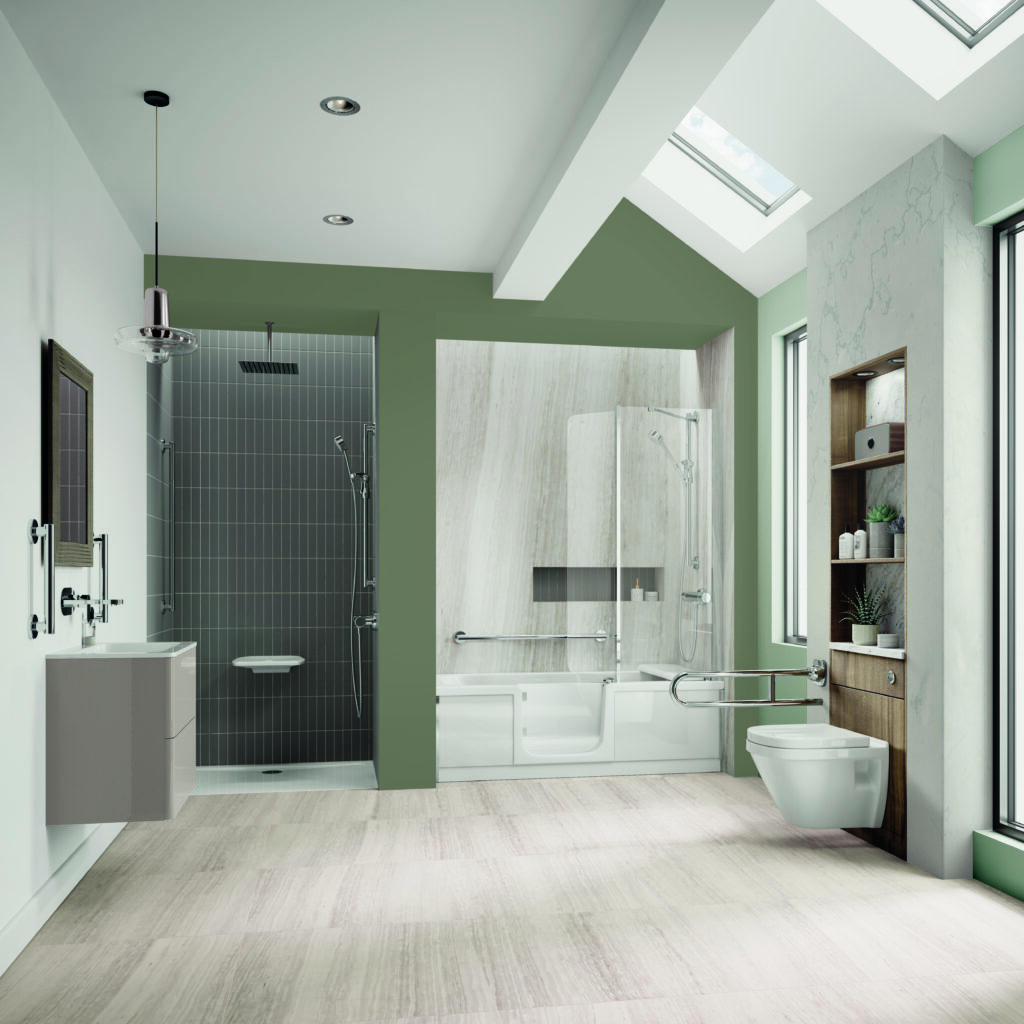Designing a bathroom for someone with restricted mobility will really depend on the abilities and needs of the person, which is why it is important to think carefully about what will suit them best when choosing between a wet room or a walk-in bath.
Here are some pros and cons of each.
-
Walk-in baths
Lots of people love soaking in a bath, and it can be a very relaxing way to end the day. Of course, getting into a bath can be difficult for disabled people, which is why ones with doors and a seat makes it easier for them to continue enjoying their bathtub experience.
Warm baths can also be very soothing for muscles, so if you suffer from muscle aches, pain, or fatigue, it can be therapeutic to have a relaxing soak instead of a shower.
However, a walk-in bath might not be the option for you if your disability is more severe, as it still poses some mobility challenges, such as operating the taps and sitting down on the seat
-
Wet rooms
An alternative to installing a new bath is to create a wet room instead. This can be an ideal solution for those with disability concerns, as it takes away the challenge of climbing into a tub or getting over the lip of a shower tray.
As the shower head is simply fitted above the bathroom floor, people can go directly underneath the shower without having to negotiate a change in level. What’s more, it offers a far larger area than a bath or walk-in shower, allowing for wheelchair access.
There is even no need to have a door or screen, opening up the entire room to the shower area and providing better access for entering or exiting the bathroom. This is an ideal solution for anyone whose mobility is deteriorating, and they are concerned they will not be able to manage baths or shower trays in the future.
Shower seats can still be fitted on to the wall, helping wheelchair users to stay sat down while they wash themselves.
Another reason to consider transforming your bathroom into a wet room is its aesthetic appeal, with these designs often adding value to a property due to their minimalistic, modern look.
Despite this, some people prefer to have enclosed shower units or bathtubs instead. This could be because they can be fitted without having to alter the entire flooring of the bathroom, as you would with a wet room.
Walk-in showers, for instance, still feature a shower tray and doors or a screen. This enables the user to protect the rest of their flooring from spray. Although the flooring might not be uniform throughout the bathroom like in a wet room, it is possible to get a low-level shower tray or a level-access shower installed to avoid any trip hazards and enable easy access for those with poor mobility.
The screen allows carers to bathe those in the shower without themselves getting soaking wet. There is also an option to get a modesty screen, which allows users to maintain a level of dignity and privacy if they need assistance with washing.
For more information on accessible bath solutions, take a look at our baths, showers and wet rooms here.

